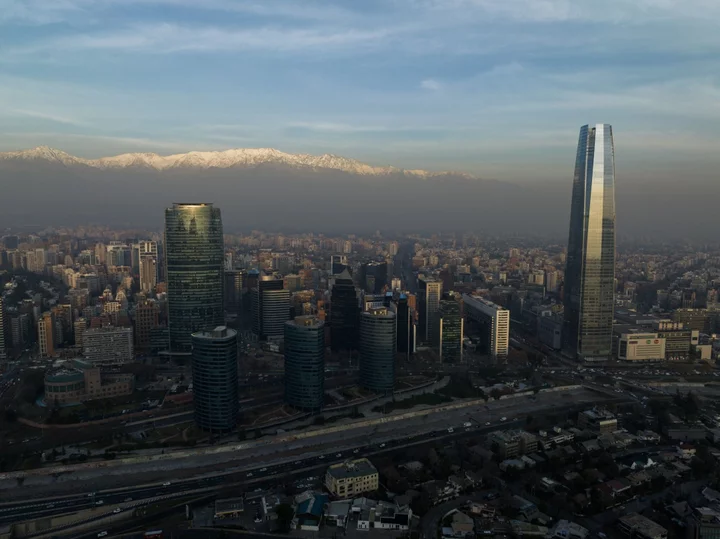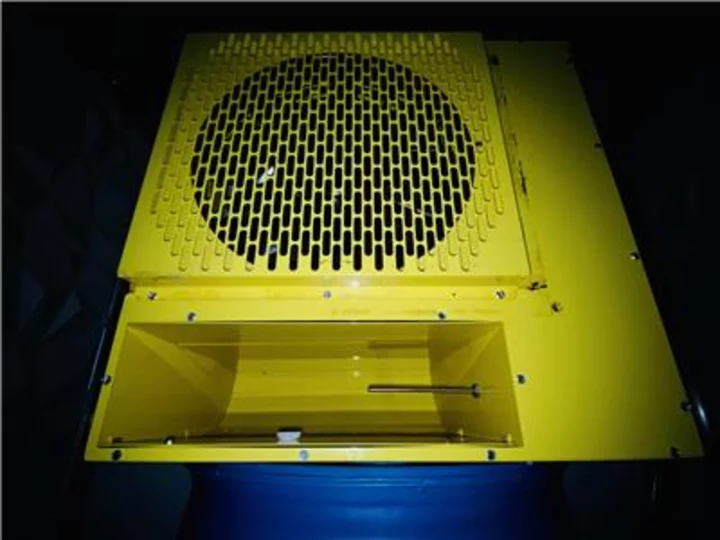
Binance.US explores ways to cut founder Zhao's majority stake - report
(Reuters) -Binance.US and Changpeng Zhao, the crypto exchange's founder and majority owner, have been exploring ways to reduce his stake
2023-05-12 07:24

Is Andrew Tate dating Jordan Peterson's daughter Mikhaila? Truth about their relationship revealed
Andrew Tate and Mikhaila Peterson went on a date exploring castles in Romania
2023-06-09 19:29

Microsoft gambles big on Hollywood-esque 'Starfield' video game
"Starfield", one of the most-anticipated video games in years, launches worldwide on Wednesday with the hype -- and production standards...
2023-09-05 13:56

Cisco buying cybersecurity firm Splunk for $28 billion, bolstering defenses as use of AI widens
Silicon Valley tech giant Cisco is buying cybersecurity firm Splunk in a $28 billion deal as it looks to keep up with potential security threats that could be brought about by the increasing use of artificial intelligence
2023-09-21 20:54

Toshiba Launches Motor Driver ICs with Small Package and Reduced External Parts that Save Space on Circuit Boards
KAWASAKI, Japan--(BUSINESS WIRE)--Jun 14, 2023--
2023-06-15 10:22

Winter Vanishes in the Andes as Climate Change Meets El Nino
Extreme heat scorching the Northern Hemisphere from California to China is also on show in the south, where
2023-08-03 03:51

FC 24 87+ Campaign Mix Upgrade SBC: How to Complete
The FC 24 87+ Campaign Mix Upgrade SBC is now live in EA Sports' Ultimate Team. Here's how to complete the SBC and the best players to pack from it.
2023-11-27 02:15

‘Last Beatles record’ was created using AI, says Paul McCartney
Sir Paul McCartney said artificial intelligence has been used to create “the last Beatles record”, which is set to be released later this year. The 80-year-old former Beatle said technology was used to extract late bandmate John Lennon’s voice from an old demo and “get it pure” for what he said will be the final song from the Liverpool band. He told Martha Kearney on BBC Radio 4’s Today programme that AI is an “interesting thing” and “something that we’re all sort of tackling at the moment” and trying to deal with. “When Peter Jackson did the film (The Beatles) Get Back, where it was us making the Let It Be album, he was able to extricate John’s voice from a ropey little bit of cassette and a piano. He could separate them with AI, he’d tell the machine ‘That’s a voice, this is a guitar, lose the guitar’. “So when we came to make what will be the last Beatles record, it was a demo that John had that we worked on and we just finished it up. It will be released this year. “We were able to take John’s voice and get it pure through this AI so then we could mix the record as you would do. It gives you some sort of leeway.” Sir Paul said there is a “good side” to AI but also a “scary side”. “We will just have to see where that leads,” he said. The singer-songwriter also spoke about his forthcoming exhibition to mark the reopening of the National Portrait Gallery, titled Paul McCartney Photographs 1963-64: Eyes Of The Storm, which incorporates unseen photographs taken by Sir Paul during the early days of The Beatles. The archive features more than 250 images taken between November 1963 and February 1964, which capture the emergence of Beatlemania through the personal lens of Sir Paul’s Pentax camera. The exhibition will run from June 28 to October 1 at the gallery, which has undergone three years of major refurbishment. It features portraits of Sir Ringo Starr as well as late bandmates George Harrison and Lennon, and manager Brian Epstein. Sir Paul said: “It is very poignant, it’s great because, whenever you lose someone, I think your natural thing is ‘Well, we’ve got beautiful memories’, and you hold fast those memories of the good times. “I don’t tend to dwell on the fact that you’ve lost someone. After a while – it’ll maybe take a year or two – and then you can look back and you just remember where you met them, things you did… “And when it came to The Beatles, and you have this overwhelming stuff happening to you, you knew each other so well that you could lean on each other – that’s what I see in these pictures.” Read More Charity boss speaks out over ‘traumatic’ encounter with royal aide Ukraine war’s heaviest fight rages in east - follow live Put ‘public good’ at heart of AI and new tech, Starmer to say Ukrainian schoolboy to buy home for his mother after selling Minecraft server Legislation needed to protect data from AI ‘ghostbots’, say researchers
2023-06-13 17:46

Gmail's new AI feature will soon write entire emails for you, Google announces
Gmail will soon have a feature that will write entire emails for you using AI,
2023-05-11 01:46

Pokimane: 5 biggest controversies of Twitch streamer and skilled gamer
Pokimane receives 22k viewers on average every stream and is the 72nd most popular Twitch channel overall
2023-05-15 14:46

How to watch U.S. Prime Video for free
SAVE 83%: Unblock U.S. Prime Video for free with ExpressVPN. A one-year subscription to ExpressVPN
2023-07-22 12:18

Flood Situation Eases in Delhi as Yamuna River Water Recedes
Flooding across New Delhi is gradually receding and the overflown Yamuna river, which cuts across India’s capital, could
2023-07-15 14:25
You Might Like...

Malaysia to warn TikTok, Meta over alleged blocking of pro-Palestinian content

In AI tussle, Twitter restricts number of posts users can read

iPhone in India: Foxconn to manufacture smartphones in Karnataka by April 2024

Scientists discover that people who live past 90 have key differences in their blood

Solar X Works Welcomes GW Global Partners as Strategic Equity Investor

Lyten Raises $200M in Series B Equity Round

AI’s Grip on Tech Set for Test With Microsoft, Alphabet Earnings

HUMAN Named to TIME’s List of The TIME100 Most Influential Companies for 2023
